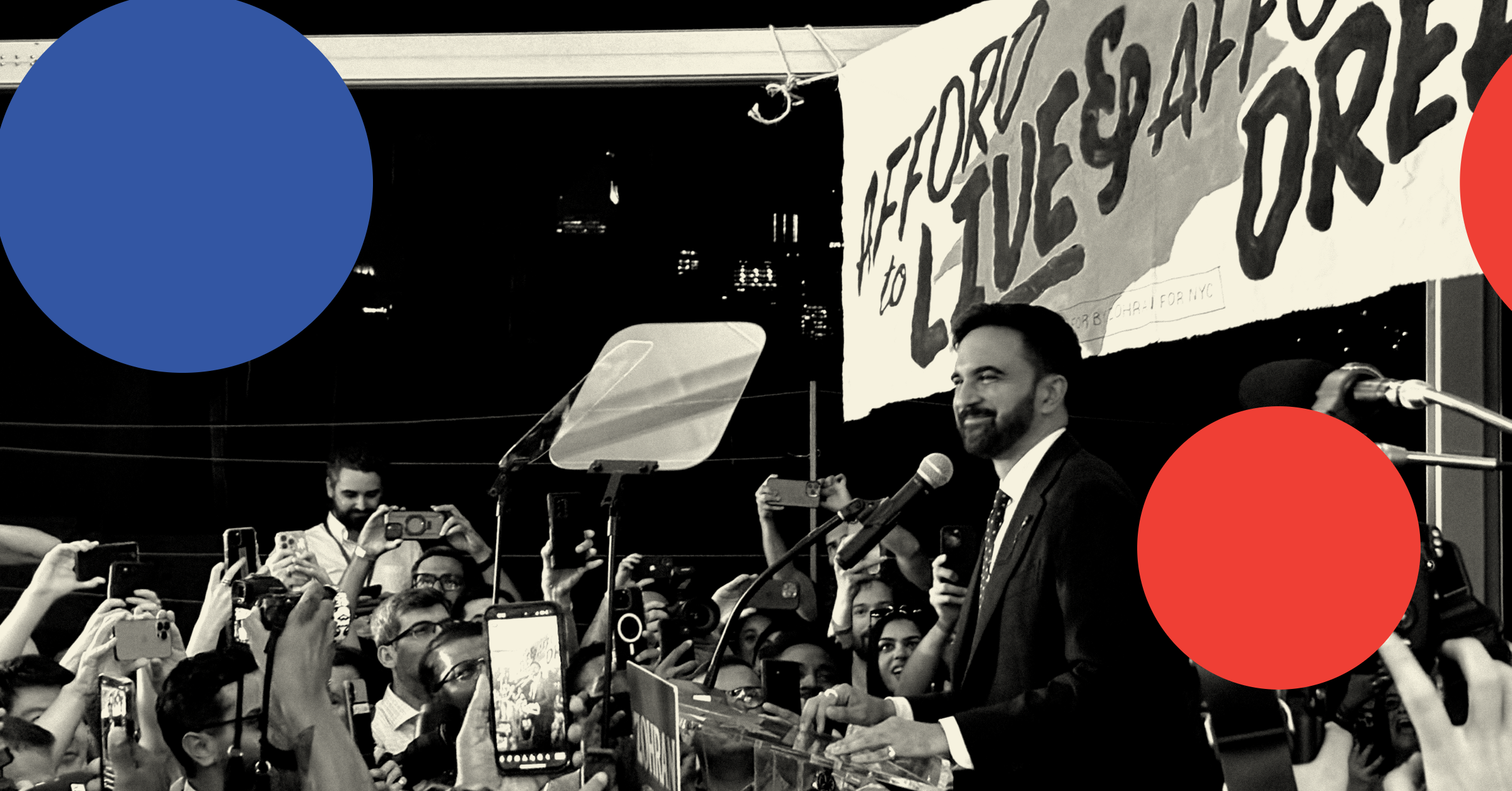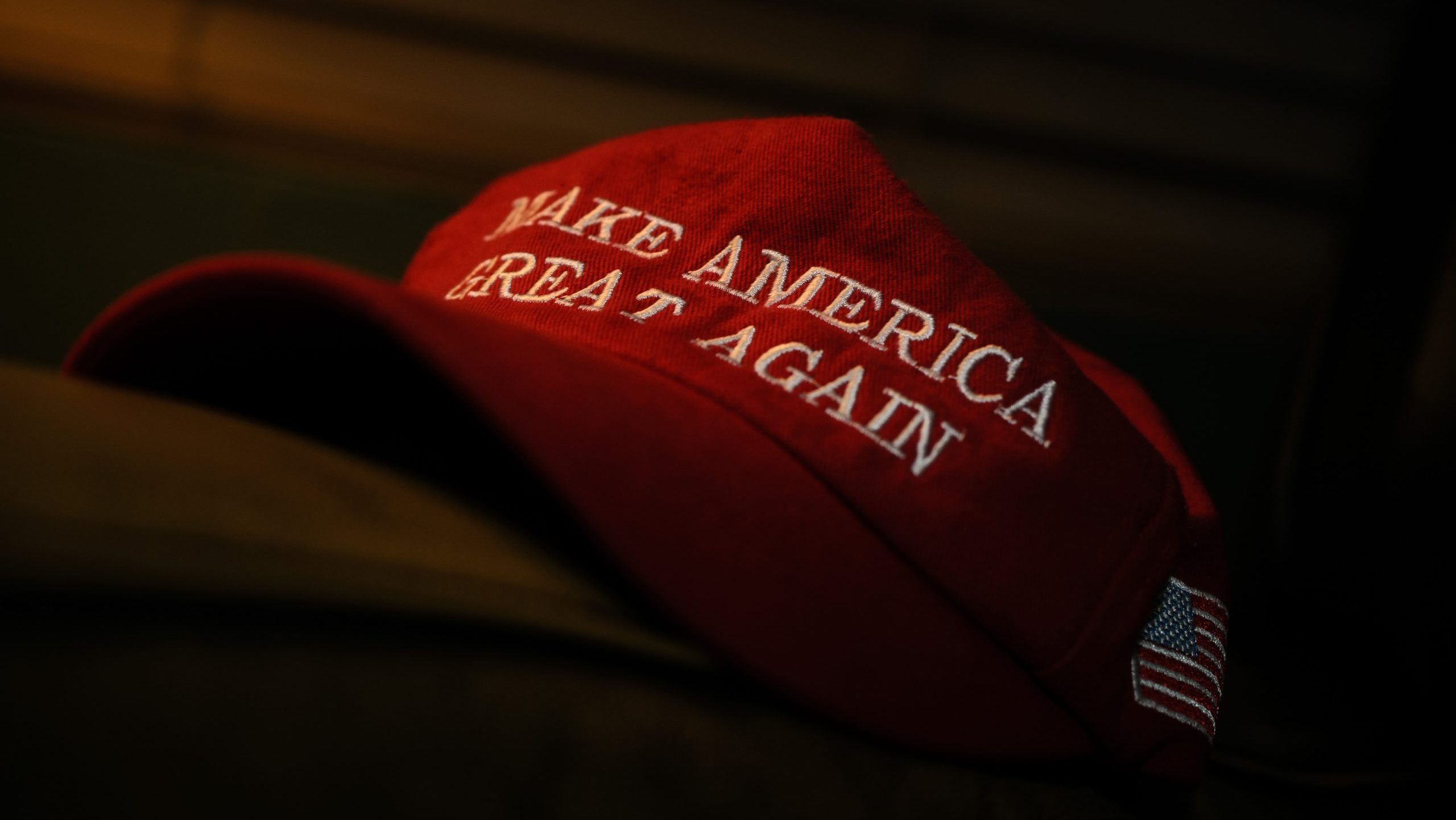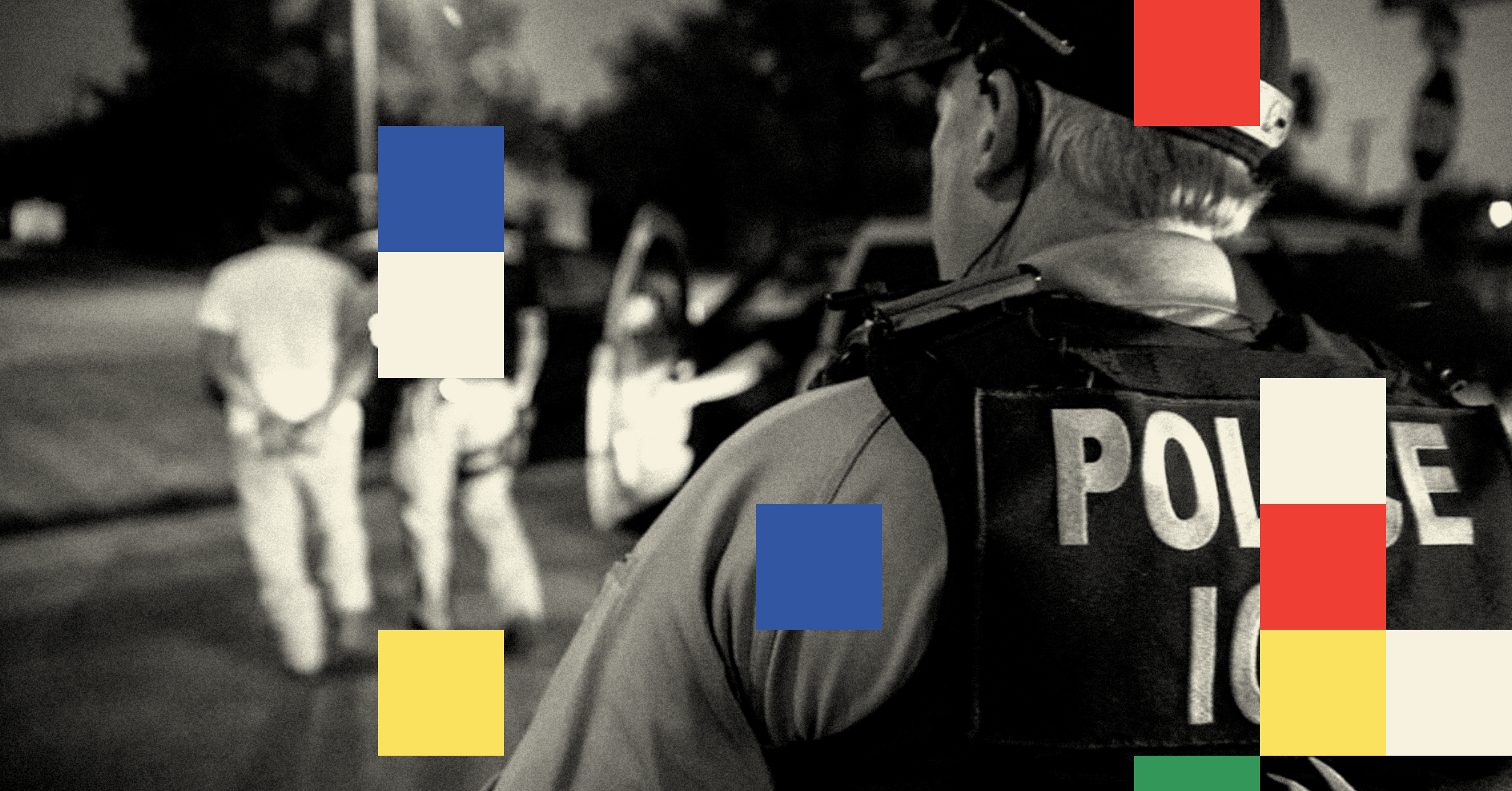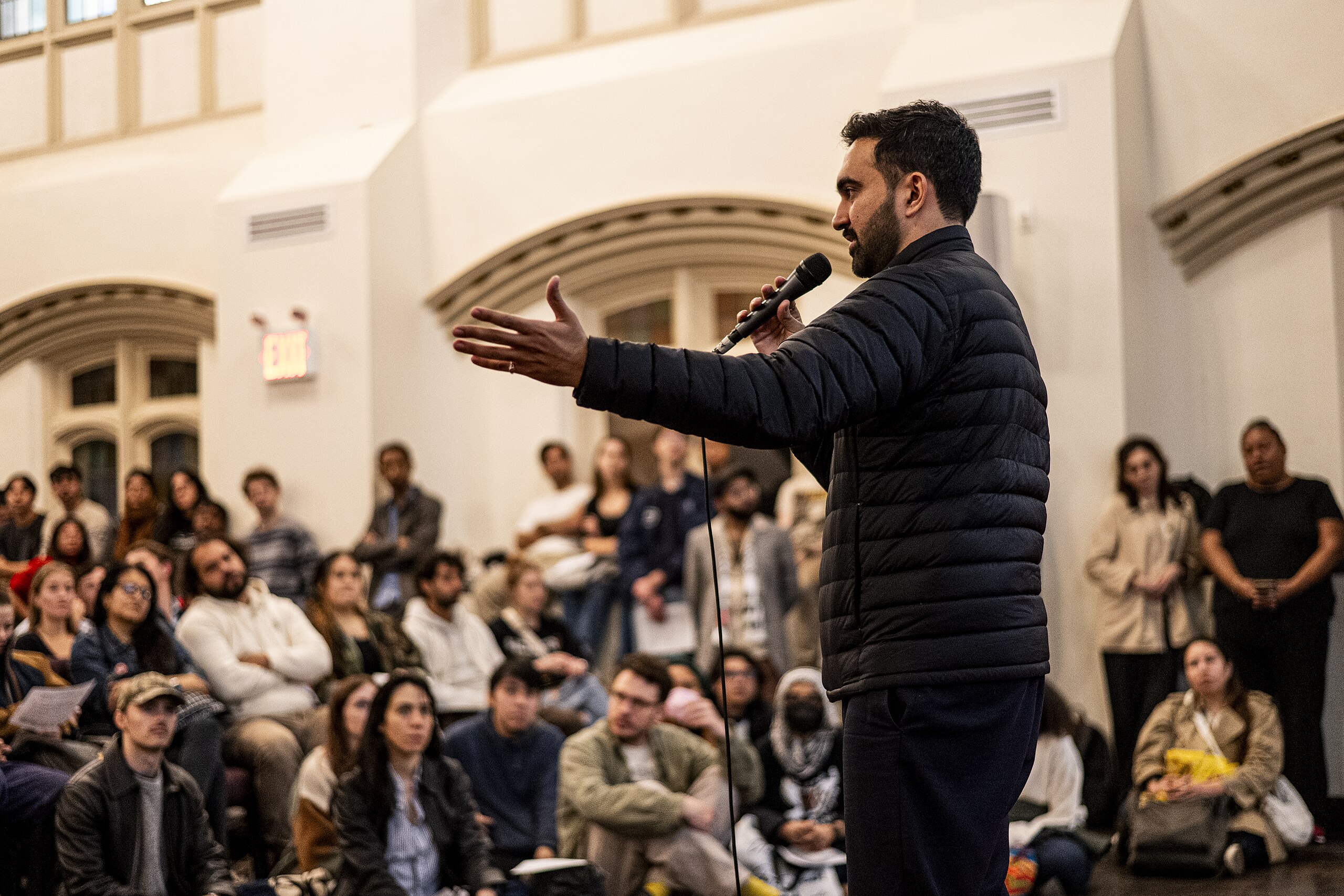This past Election Day gave hope and inspiration to hundreds of thousands of New Yorkers. Zohran Mamdani — a democratic socialist who campaigned on “pie in the sky” ideas like fast and free buses and a rent freeze on rent-stabilized apartments — emerged as the winner of the New York Democratic mayoral primary.
For many outside the campaign, it was easy to see a surprising win that shocked the establishment. For the thousands that put in their time and energy, though, it is the satisfying culmination of more than eight months of work.
More Than An Endorsement
Early October 2024. Zohran, a DSA member and a New York State Assemblyman, was already well-known among DSA members. After presentations, speeches, discussion, and comments, the membership voted to recommend endorsing Zohran for mayor.
After a prospective candidate meets with our candidate recruitment team, the candidate fills out a detailed questionnaire. Our chapter’s Electoral Working Group reviews the questionnaire and may choose to hold a candidate forum with wider membership to vote on recommending to endorse. From there, the chapter’s Citywide Leadership Committee considers these recommendations and formally votes on the endorsement.
But there’s one important way our endorsement is different from most other progressive organizations. As our chapter’s “getting our endorsement” section explains:
An NYC-DSA endorsement is not simply another logo to add to a candidate’s direct mail. Instead, it is a grassroots, large-scale volunteer mobilization effort that derives its power and legitimacy from a democratic process that engages a broad base of our membership. We view electioneering — and especially our canvassing operations — as an opportunity to build popular support for our policy goals and our movement.
Each year hundreds, if not thousands, of our members volunteer on our candidates’ campaigns as canvassers, field leads/captains, graphic designers, comms workers, and campaign staff. Members help however they can. And this grassroots effort is one reason why there’s a large enthusiasm gap between our candidates and their opponents.
Raising Funds — and Expectations
January 15, 2025. Deadline for the “January Periodic,” the first campaign finance disclosure of the election year. Candidates try to use this report as an initial show of viability. A good haul in contributions can trigger an upward spiral, encouraging endorsers who’ve been taking a “wait and see” approach to get off the fence.
Contributions are one more advantage of a DSA endorsement and its membership involvement. We’re a thousands-strong committed body of small-dollar donors. From shortly after the forum in October up to that mid-January deadline, members and supporters contributed all they could to the nascent Mamdani campaign.
By the time the dust settled, Zohran had raised over $600,000 from 6,502 unique donors — easily outraising all other candidates. The campaign estimated about $300,000 was eligible for matching funds from the city. With those 8-1 matching funds unlocked, that meant over $3 million in total raised.
Signature Moment
Late February 2025. We were petitioning: getting the necessary number of signatures from local citizens to run in a given party’s primary. For this year’s Mayoral Democratic Primary, the number was 3,750, but best practice is to get well over that number to account for challenges of bad signatures.
I wandered with comrades up and down Brooklyn’s Prospect Park on a semi-rainy afternoon. Signatures were plentiful, but some of the conversations I had with passers-by had me concerned about Andrew Cuomo’s impending entrance to the race. Some refused to sign the petition because they believed only Cuomo could stand up to Trump. Though I mentioned that Cuomo and Trump have a history of sharing donors, they seemed resolute that our ex-governor was the true bulwark against the Trump assault on our democracy.
Then March came. Cuomo officially announced his candidacy. Democrats in Congress, led by Chuck Schumer, caved without a fight on a Republican stopgap bill designed to short-change various social safety nets. Meanwhile, fresh off a Mar-a-Lago visit (and timely Justice Department dismissal of his corruption indictment), Mayor Eric Adams held a joint interview with Trump’s border czar Tom Homan. The two men announced that NYC would support ICE, giving it access to Rikers Island to hold detainees. An emboldened ICE moved to arrest and detain political opponents like Mahmoud Khalil. Millions of Americans saw a GOP hellbent on hollowing out our social services, launching a war on federal workers, and giving ICE carte blanche in New York and other sanctuary cities, while establishment Democrats preemptively waved the white flag.
In sharp contrast to Adams, a viral video emerged of a justifiably angry Zohran confronting Homan in Albany. Mamdani vowed to “kick the fascist ICE out” of NYC. He campaigned unapologetically as a candidate determined to oppose Trump while answering New Yorkers’ material concerns. He promised bold plans like the rent freeze, city-owned grocery stores, and universal free childcare.
The Campaign Has Its Moment
Spring 2025. The movement turns to canvassing. People go door to door, singly or in pairs, knocking 60-75 doors over a two-block area called a “turf.”
Field leads give new canvassers training and a persuasion script before sending them out into the field. Our campaigns usually give canvassers a lot of room for improvisation and using their own voice to persuade voters. This way, canvassers can deliver the script’s talking points based on their conversation style and the patience of the person whose door they’re knocking.
These scripts come with a small list of “asks.” Will you rank Zohran #1? Great! Can I also count on you to not rank Andrew Cuomo? (This was my favorite ask because it usually got the most emphatic nods of agreement.) Wow, you seem really committed! Would you be interested in joining the campaign as a volunteer?
Canvassing can seem scary to a new volunteer, but the turfs are curated to focus on reaching registered Democrats. That said, you’re still knocking on the doors of perfect strangers. If they answer, you’re talking politics with them literally at their own home. Unannounced. The vast majority of the time, the person you want to speak to won’t even be home. And if they are, they might be willing to take your lit, but wish to “do their own research” and bid you good day. Canvassing can take a lot out of a person. Fortunately, that is where the enthusiasm gap comes into play.
It was late May. After all the news involving Trump, ICE, the Democrats, and Eric Adams, a sea change in support became apparent fast. Volunteer canvassers started showing up in massive numbers. Pre-canvass rallies filled both Bed-Stuy’s Herbert Von King Park and South Brooklyn’s Sunset Park. Organizations like Jewish Voice for Peace alongside newly created groups like Hot Girls for Zohran provided still more canvassers to the growing movement.
The campaign set a goal of knocking 1 million doors. We ended up knocking over 1.5 million. By contrast, the rumor mill hinted of a certain opponent’s paid canvassers spending entire shifts sitting in their cars and secretly confiding that they planned to rank Zohran #1.
Say The Right Things When Electioneering
Late June. The final stretch of the primary meant canvassers shifted gears to an activity called poll site visibility. New York state law requires electioneering to occur at least 100 feet away from the entrance of any poll site (both in early voting and on Election Day itself). Poll site visibility entails going to the general area and making your final case for the candidate. Field leads armed us with stacks of literature.
Throughout early voting and on Election Day, we handed out lit to passers-by with gusto. As the week went on, I witnessed something I had never seen in my life — my early voting polling place had a line out the door and around the corner. A gut feeling told me this surge in early voters wasn’t there to rank Cuomo. The enthusiasm gap was hitting critical mass. Feeling the momentum, I excitedly signed up for more poll site shifts, including one final post-work Election Day shift. The shift was over and done before I knew it. I packed my things and prepared to head over to an election night party in East Williamsburg.
Where Were You When Zohran Won?
June 24, Election Night. I wandered in the front door of a sprawling windowless venue on a hill dotted with warehouses overlooking the Newtown Creek below. I could feel a nervous, excited energy hanging in the air as hundreds of Zohran supporters slowly filed in. The comedian Sarah Squirm showed up and gave a speech that drew both laughs and cheers.
We were between speeches. The music was booming. A comrade pulled me aside and showed me her phone. It was a live feed from the New York Times. It said that Andrew Cuomo had just called Zohran to tell him he ran a good campaign. I re-read the line over and over. That looked like a concession call. Seconds later, the announcement came — Zohran Mamdani was the projected winner of the Democratic Primary.
In the days since, I think about his election speech, specifically the part where he quoted Franklin Roosevelt:
As FDR said, democracy has disappeared in several other great nations, not because the people dislike democracy but because they have grown tired of unemployment and insecurity, of seeing their children hungry while they sat helpless in the face of government confusion and weakness. In desperation, they chose to sacrifice liberty in the hope of getting something to eat. New York, if we have made one thing clear over these past months it is that we need not choose between the two.
This victory may have shocked a lot of people. But for us on the ground, we believed in the possibility of a better world ever since that forum last October. We learned we were far from alone.




